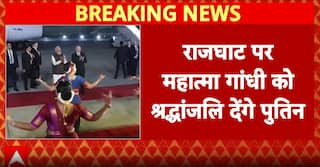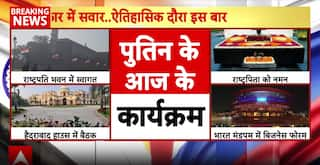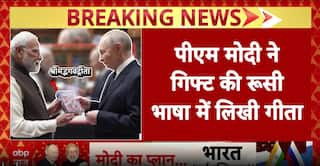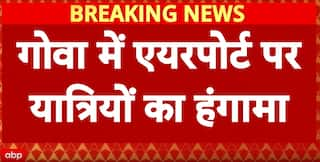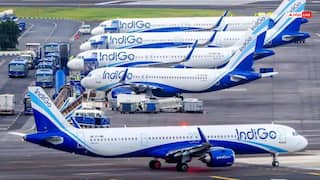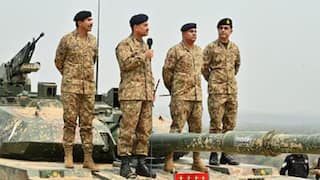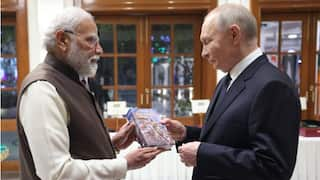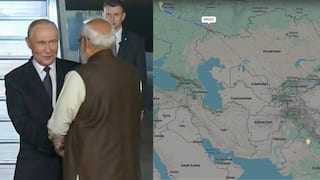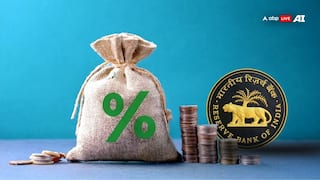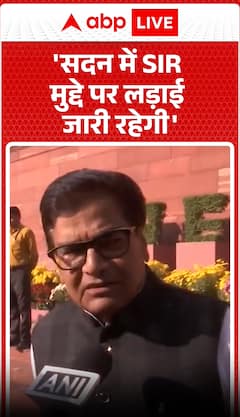Explorer
Key Sonia Gandhi aide, in his memoirs, says Golwalkar had played a key role in persuading Maharaja Hari Singh of Jammu and Kashmir to accede to India

Image of M S Golwalkar / Courtesy: Vishwa Samvada Kendra
The Second Sarsanchalak of the Rashtriya Swayamsewak Sangh (RSS) Guruji M S Golwalkar had played a pivotal role in persuading Maharaja Hari Singh of Jammu and Kashmir to accede to India, says a senior civil servant Arun Bhatnagar who has been a close Sonia Gandhi aide during the UPA years.
In his memoirs, Bhatnagar, 1966 batch IAS officer who had headed UPA chairperson Sonia Gandhi’s National Advisory Council (NAC) secretariat in close coordination with Manmohan Singh’ PMO between 2004 to 2008, writes that on October 17, 1947, at union home minister Sardar Vallabh Bhai Patel’s instance, Guru Golwalkar flew to Srinagar to explain to the Maharaja the futility of entertaining ideas about Jammu & Kashmir’s independence. The Maharaja expressed willingness to sign the Instrument of Accession in favour of the Dominion of India, which was reported to Sardar Patel. However, the invasion of the State by tribesmen from the Pakistan side in the next few days altered the situation completely. Maharaja Hari Singh had to seek urgent military aid from Pundit Jawaharlal Nehru cabinet but it refused to send Indian troops unless the Maharaja acceded, arguing that the Indian Army could only defend Indian territory.
This little known but significant nugget of information has been revealed by Bhatnagar, grandson of eminent scientist and educationist, Shanti Swarup Bhatnagar, in his recent book, “India: Shedding the Past, Embracing the Future, 1906-2017,” (Konark Publishers).
Bhatnagar is a respectable figure among congress circles, had also served had also served as Chairman of Prasar Bharati Board during the UPA regime.
Bhatnagar says in the annals of the RSS and Sangh parivar, Guru Golwalkar occupies a very special position and left a deep influence on prime minister Narendra Modi. In the chapter titled ‘Forces of Hindu Organization,’ Bhatnagar, writes that in 2008, after Modi won Gujarat assembly polls in 2007, the then Gujarat chief minister authored a book, Jyotipunj (‘beams of light’) in which he recounted the stories of the lives of the extraordinary men who have inspired him. The longest biography was of the RSS’ second Sarsanghchalak, Guru Golwalkar. “The reverence with which Modi writes about Guru Golwalkar in the essay titled ‘Pujniya Shri Guruji ’ suggests that the Guruji was an extremely important influence in his life,” Bhatnagar wrote.
According to Bhatnagar, Guru Golwalkar took care not to give the British authorities an excuse to take action against the RSS. “On their part, the colonial government acknowledged that the RSS organization ‘scrupulously kept itself within the law and refrained from taking part in the disturbances that broke out in August 1942,’ observes Bhatnagar.
After taking over as head of the RSS in 1940, Golwalkar worked on the organizational expansion that his predecessor Dr Hedgewar had overseen. But Golwalkar, the author says, had no direct exposure to political work. When the Congress – led by Mahatma Gandhi – announced the Quit India movement in 1942, Golwalkar commented, ‘Right from the beginning, the Sangh has decided to observe certain constraints in some matters’. He argued that ‘the Congress leaders did not make adequate preparations … On careful thought, I have realized that we cannot reach our goal even if we took part in it with all our might ... In such a situation, I think the Sangh’s participation in the movement would serve no purpose’.
Golwalkar had his major institutional endeavour in founding of the Vishva Hindu Parishad (VHP) in 1966 and RSS labour wing, the Bharatiya Mazdoor Sangh (BMS). The creation of the VHP as an entity that could directly intervene in Hindu religious causes was particularly important for Golwalkar.
When Shyama Prasad Mookerjee quit Nehru cabinet in 1950, Golwalkar got in discussion with Mookerjee to set up a political party. The RSS leadership indicated preference for a Kesari (saffron) flag and a Hindi name for the party, such as Bharatiya Lok Sangh or Bharatiya Jana Sangh. Mookerjee chose the latter. Eventually, Golwalkar and Mookerjee agreed that for the newly-established party to enlist the cooperation of the Sangh Swayamsevaks, it should have the same ideal as the Sangh.
By the time Golwalkar died in 1973, the Sangh Parivar was in place. “The organizations of the Sangh could grow more quickly by drawing from the pool of people in the Shakhas. It was Golwalkar who developed the principles more fully and infused the RSS with them,” says Bhatnagar. For instance, Dr. K.M. Munshi, a veteran freedom-fighter and an adherent of Sardar Patel, set up the Bharatiya Vidya Bhawan as an institution to popularize Hindu cultural nationalism. Munshi, a former Congressman, joined the Swatantra Party established by Rajaji and was also a VHP founder.
Rasheed Kidwai is the Associate Editor with The Telegraph. His Twitter handle is @rasheedkidwai
Disclaimer: The opinions, beliefs and views expressed by the various authors and forum participants on this website are personal and do not reflect the opinions, beliefs and views of ABP News Network Pvt Ltd.
Follow Blog News on ABP Live for more latest stories and trending topics. Watch breaking news and top headlines online on ABP News LIVE TV
View More
Advertisement
Advertisement
Advertisement








